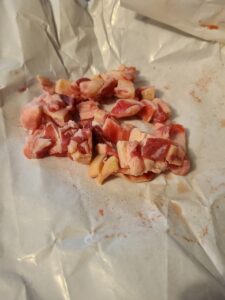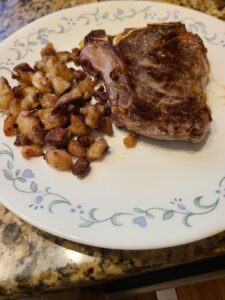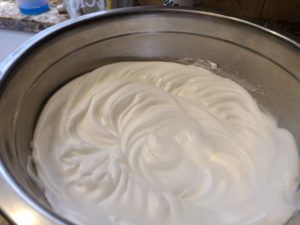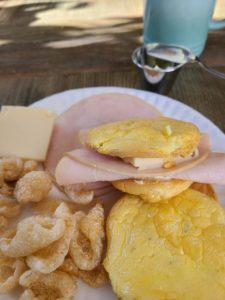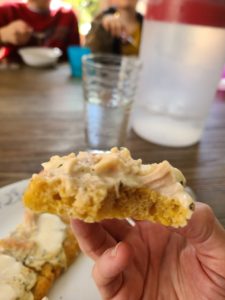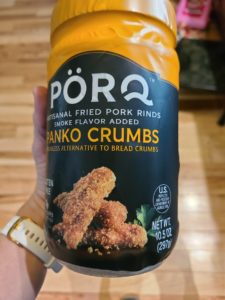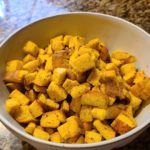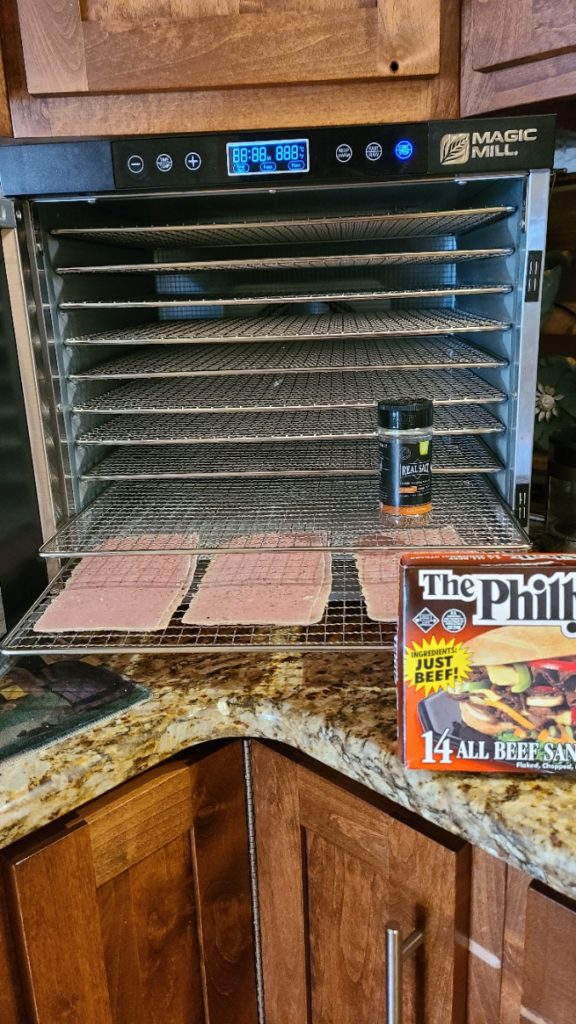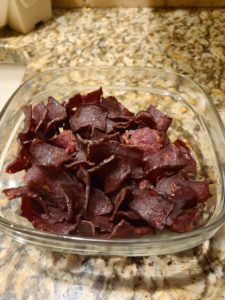It occurs to me that, if you’re going to make my pemmican recipe, you might also want to know how to render your own beef tallow. The instructions for lard and tallow are basically the same, so this is also how you get good, old-fashioned lard for cooking. We really need to up our fat game if we’re going to be healthy in our current food environment, so let’s get cracklin! (SWIDT?)
Like most things I do, rendering fat is super easy.
You can buy tallow and lard already rendered, of course, but to get clean lard that hasn’t been partially hydrogenated can be very expensive. You definitely don’t want what’s on the shelf at the grocery store, unless they have Epic or similar brands. Those are so expensive, I only do that if I have no other choice. If you want to have good animal fat, but you need to be frugal, you have to go local (lots of small farms render and sell lard or tallow) or do it yourself. Being a cheapskate, I nearly always do it for myself.
The first step to rendering fat is getting some raw fat. For the best quality tallow, you need suet. For lard, you want leaf fat. These are the fats from around the kidneys of the animal, and are the purest source of fat. I do sometimes just buy plain old fatback (not salt pork!) and use that instead, and it honestly renders out fine. It’s good enough for the likes of us, anyway. But leaf fat will need no trimming and give you no porky odor in your lard, whereas fatback does sometimes have a slight scent to it when it’s rendered out. Fatback costs less, though, so I do that pretty frequently. Nobody has ever complained.
Leaf fat also gives the best cracklins you’ll ever have. This is something to consider, believe me.
Now that you’ve found some fat, chop it up!
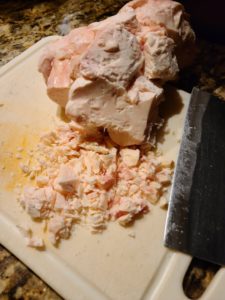
With beef suet, I’ve found that simply chopping it while still frozen breaks it down small enough that you don’t need to do anything further. It practically shatters. For pork fat, cube it with a knife, then put it in the food processor for a few seconds to break it down even further. Or just keep chopping with the knife until it’s tiny and you’re feeling like a greased pig yourself. Whatever you like. (Update: I’ve been told you can skip this step if you’re in a rush. I doubt you’ll get the same delicious crackling or get as much fat rendered out that way, but go ahead if you don’t want to chop!)
Cook it. After the fat is chopped, it goes into the slow cooker on low for several hours. Sorry to be so vague about timing, but it really depends on your fat and your cooker. I’ve had it go for as little as four hours to as long as seven. When the unrenderable portion of the suet or leaf fat has risen back to the top and turned brown, you’re done.
Scoop the solids out into a fine mesh strainer and squeeze the liquid fat back into the crock with a spoon. If you want to eat the cracklins (and honey, you do), salt them and enjoy them after they’ve cooled enough to leave the skin on your tongue. If they’re not quite brown enough yet, you can fry them a little bit more. You won’t be able to eat it all, so invite children to the feast.
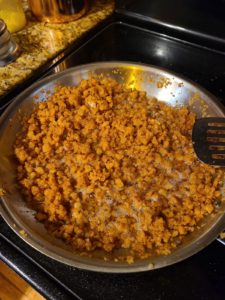
Mmmmm, cracklins!
Strain. Place a sieve or a strainer over a stainless steel bowl, and line it with paper towels–I find the cheap Sparkle brand has a great lint-free flow–and carefully pour the hot fat through it. If there are any solid bits left, repeat this step. The finer your sieve and the better your paper towels, the fewer times you have to do this. I usually need to double strain it.
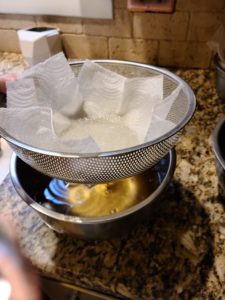
You get a beautiful golden liquid that turns white when it solidifies. Keep it in a glass or metal jar (not plastic, please, for your health’s sake), either out of direct light in a cupboard or in the refrigerator.
Clean up. I use paper towels to wipe as much fat as possible off of my knives, food processor parts, crock pot and bowls. I do not want that amount of fat going down my drain and clogging it up. You don’t either. When you switch to a heavily fatty-meat-based diet, you will want to be careful with your waste, or face plumbing problems.
Now you can cook with your rendered fat, or make pemmican, or rub it on your dry skin, or make soap and candles–sky’s the limit, y’all! Have fun!
Questions or comments? Discuss it with me on Gab, MeWe, or Social Galactic.
